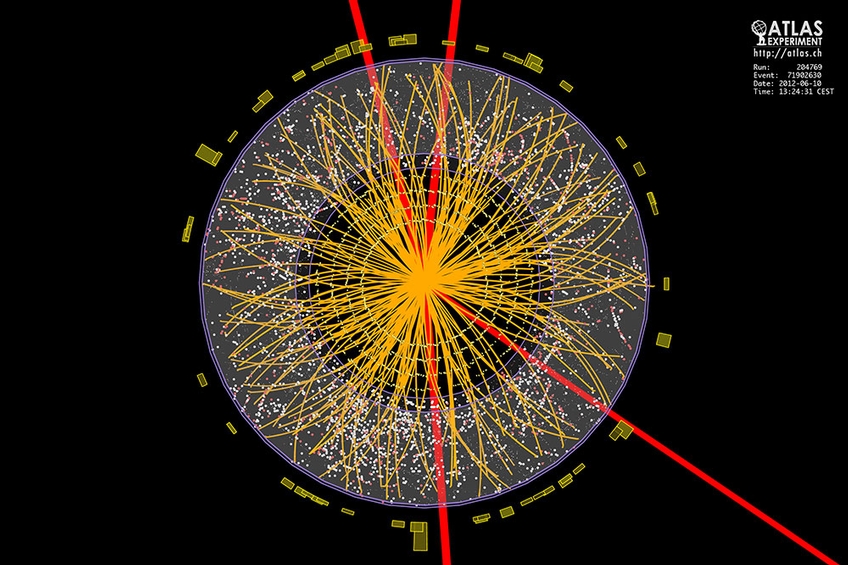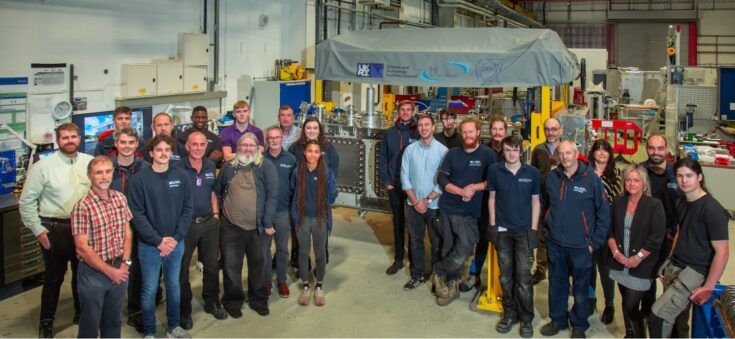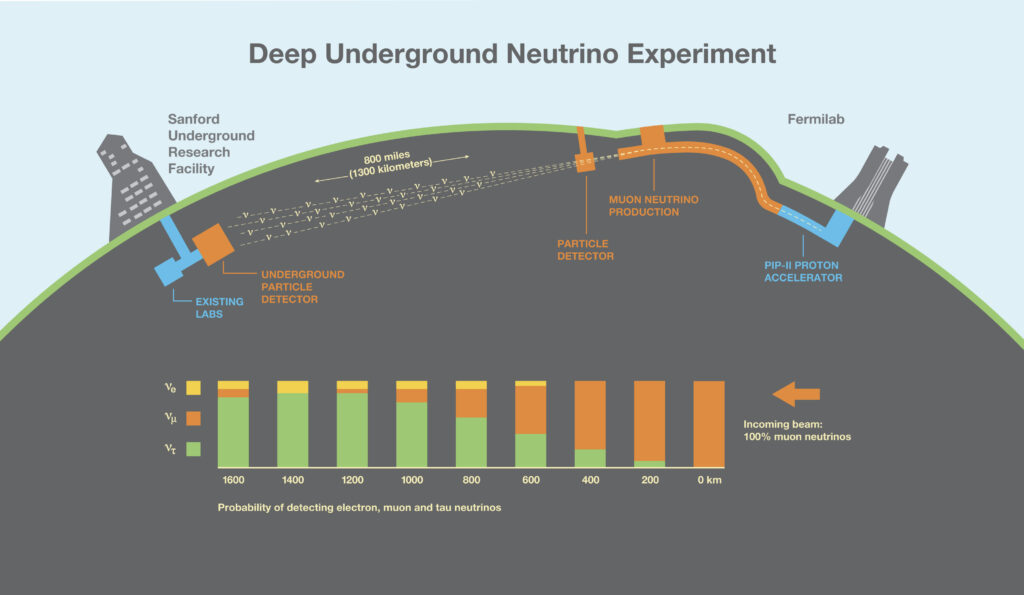There are plenty of resources online if you want to know more about the areas covered by our event and the career options which could be waiting for you. We have collated some here for you but if there is anything you particularly want to know more about then do get in touch with us and we will do our best to point you in the right direction.
We are proud that STFC is home to an incredibly diverse array of research, technology and engineering projects – and each one promises to fire the imagination. Our work is focused on inspiring impact – to make a real-world difference to people’s lives and the environment around us.
Our activities are carried out cover a wide range of science, engineering and technology, including:
- Materials science
- Engineering and instrumentation
- Particle physics
- Space science
- Accelerator-based technologies
- Information technology
- Computer science
So what is particle physics?
Science doesn’t get much bigger or more exciting than this!
Particle physics research involves the biggest, most complicated experiments in the history of science, with the fastest computers, the coldest temperatures and the strongest magnets on Earth.
Particle physics re-creates the Universe just after the Big Bang and hopes to answer the questions humans have been asking for eternity:
- Where do we come from?
- What are we made of?
Everything, including ourselves, is made of matter whose underlying structure is governed by basic laws. STFC’s particle physicists investigate the structure of matter at the most fundamental level by looking at the sub-atomic particles that make up atoms.
One of the current goals in particle physics is to complete the ‘Standard Model’, which describes the known particles and their interactions. The Higgs particle, which is thought to be responsible for giving particles their mass, has recently been discovered and work is now underway to understand its properties and if these conform to predictions of the Standard Model.

Credit: ATLAS COLLABORATION/CERN
The Standard Model does not give a complete theory of everything and so physicists are looking for phenomena ‘beyond the Standard Model’. There are hints that new physics such as dark matter and supersymmetry exists and so the search is on to find experimental proof. These searches require the development of new detectors that push technology to the limit.
Particle physics research aims to answer fundamental questions such as:
- How can we explore and understand the extremes of the universe?
- Are the particles described by the Standard Model fundamental, and how do they interact?
- What is mass – how do particles get heavy?
- Where does gravity fit in to the Standard Model?
- What are the properties of neutrinos and what is their role in cosmic evolution?
- What is the origin of cosmic rays?
- Why is there an imbalance between the existence of antimatter and matter?
- How can high-energy particles and gravitational waves tell us about the extreme universe?
Further links:
Engineering Technology Centre (ETC)

The Engineering Technology Centre (ETC) sits within the Technology Department (TD), and is one of the largest departments in the Science and Technology Facilities Council (STFC). It spans two of STFC’s three major sites and is comprised of over 280 staff members, including scientists, engineers, technicians and more.
Our role at STFC is to provide technology and instrumentation to the organisation’s programmes and facilities and derive maximum impact from its innovations through collaboration with industrial and academic partners. Our work involves the design and delivery of large and complex scientific instruments and we specialise in using our multi-disciplinary engineering skills and expertise to develop solutions where no suitable technologies exist.
TD is located on two sites: Daresbury Laboratory (DL) and the Rutherford Appleton Laboratory (RAL).
DL, which was founded in 1962, is an internationally recognised, world-leading scientific facility. Based in the Liverpool City Region and a part of the Sci-Tech Daresbury Campus, the laboratory hosts key activities in accelerator science, scientific computing, data science, technology, and nuclear physics
RAL has existed on the Chilton site, in one form or another, since 1957 and is named after famous physicists Ernest Rutherford and Edward Appleton. The laboratory is located on the Harwell Campus in Oxfordshire and houses several sophisticated scientific facilities including the Central Laser Facility, the ISIS Neutron and Muon Source, RAL Space, the Scientific Computing Department, the Particle Physics Department, and Diamond Light Source.
DUNE

The Deep underground Neutrino Experiment DUNE is a liquid argon neutrino oscillation experiment located in the Sanford Underground Research Facility (SURF). It has a wide physics program, but one of the main aims is to investigate, if neutrinos and antineutrinos behave the same.
Neutrinos are different from other particles: they barely interact with other matter, leaving no trace of their passage. When they travel through space, neutrinos can change their flavour (changing from one type to the other), a process called oscillation. An ideal way to measure the neutrinos’ properties is to produce a neutrino beam, and measure how the composition of the neutrino beam changes as the neutrinos travel hundreds of kilometres through the earth. The DUNE experiment will determine if neutrinos and anti-neutrinos will do this in the same way. Any difference observed in this process (called CP-violation) might help us explain why there is more matter than anti-matter in the Universe.
The Deep Underground Neutrino Experiment (DUNE) is a long-baseline neutrino oscillation experiment. It is the flagship particle physics experiment in the US pursued by an international collaboration of almost 1000 physicists from around the world. The DUNE Experiment will use state-of-the-art Liquid Argon Time-Projection Chamber (LArTPC) technology for the massive neutrino detectors planned at the Sanford Underground Research Facility in South Dakota.
The UK is the largest contributor to DUNE after the host country, the US. The PPD neutrino group is providing the DAQ system for the far detector and the readout planes (APAs) to record the signatures generated by the neutrino interactions. Additionally, we are taking the lead in developing the event reconstruction software and contributing to the computing infrastructure and organisation of the experiment.
DUNE factory Open for business!
Here at Daresbury Laboratory we have a bespoke factory facility created to build anode plane assemblies for the Deep Underground Neutrino Experiment.
Boulby Underground Laboratory

A lab deep underground comes as quite a surprise to many! STFC’s Boulby Underground Laboratory plays a pivotal role in a whole range of scientific projects which need a ‘quiet environment’ with almost no background radiation. There are very few labs on Earth like Boulby and that is why they welcome work ranging from Dark Matter detection to environmental science and technology developments for the exploration of other planets.
We have a small, but passionate, team onsite at Boulby and there is extra information if you want to find out more:
- An introduction to Dark Matter
- Studying life on Mars…underground in Yorkshire with Channel 4 News
- Experiments and activities to try at home or at school
If you are specifically interested in Dark Matter, watch this recent video about a new facility at one of our other sites – the Rutherford Appleton Laboratory.
People like you
During the masterclass you will have met just a handful of the staff who make up STFC. People work here in all types of roles. Yes, we have scientists and technicians who have their own areas of expertise, but we also have researchers, public engagement teams, communications, finance, HR support and much more. And all of these people are just like you! They come from a variety of backgrounds and live in a variety of places. We’ve picked out a handful of videos of some of our colleagues to give you an idea of who you could be sharing a coffee with in the future!
- John – a former apprentice and now an Electrical Technician working on international projects such as the European Spallation Source
- Angela – a technician at RAL space, she specialises in making specialist blankets to project our precious instruments when they go up into space
- Kristina, Amir, Jenny and Danny talk about their PhDs at The Cockcroft Institute
- Gabriel – a Research Scientist at ISIS Neutron and Muon Source talks about the atomic structure of materials
- Luke – a Senior Mechanical Engineer at Daresbury Laboratory who started with us as an apprentice and now manages a new apprentice along side his projects
- Paul – an Engineer and Project Manager at Daresbury Laboratory explains how we have been building accelerators on site for 50 years and looks at the work his team are doing for the European Spallation Source
- Emily – a former Mechanical Apprentice at the ISIS Neutron and Muon Source, she talks about the hands-on work she was involved in and how she was welcomed as part of the team.
- Donna – once a make-up artist, Donna is now a highly specialist Laser Target Fabricator. Her eye for detail makes her an ideal candidate for this role.
You can visit the STFC YouTube channel to see the latest interviews with colleagues and stories about the science we are working on.
Careers
We have a website dedicated to careers at STFC. There you can find out more about our graduate scheme, apprenticeship opportunities and student placements, as well as search for current vacancies. STFC is a wonderfully diverse and enriching place to work it would be great to welcome you back as colleagues in the future.
We also offer a work experience scheme.
